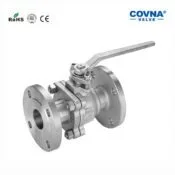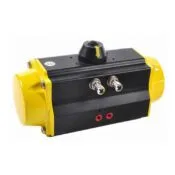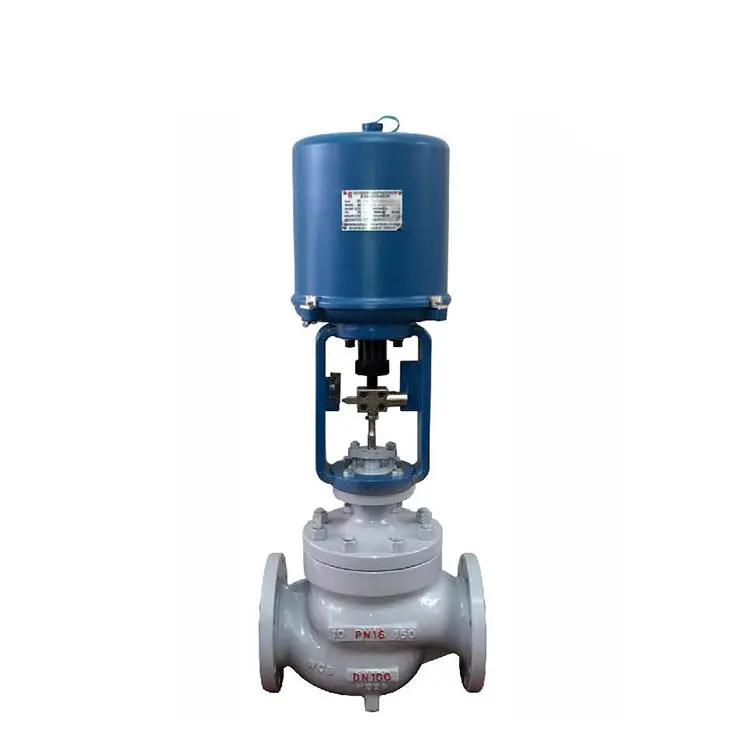
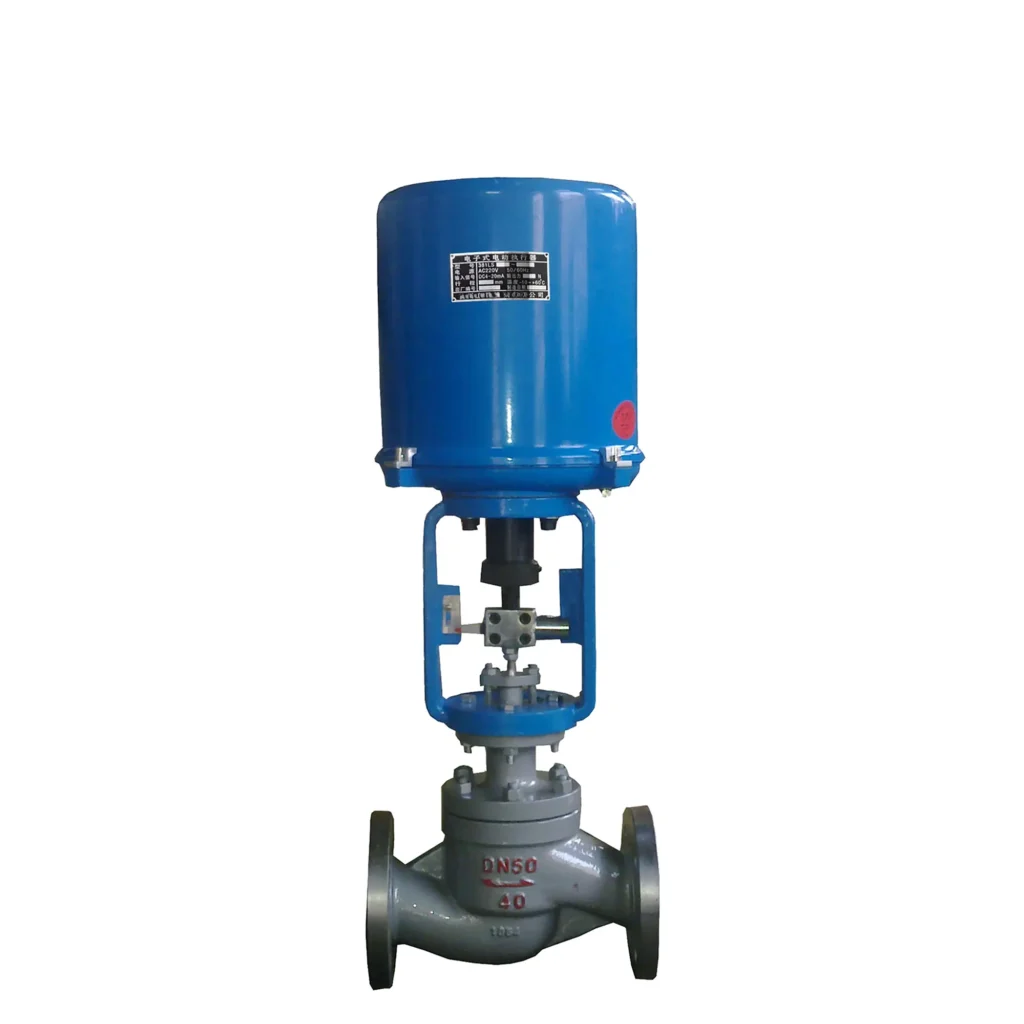
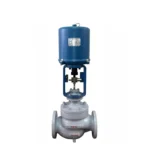

COVNA Electric Sleeve Control Valve
The electric single-seat (sleeve) adjustment valve boasts a compact design and exceptional performance, positioning it as a premium base electric control valve. It is engineered for production process control systems that handle general fluid media. This valve is renowned for its dependable operation, minimal seat leakage, robust flow characteristics, broad adjustment range, and streamlined structure that ensures an unobstructed flow path. With excellent performance and stable operation, this product series effectively meets diverse control requirements in a wide range of applications.
- Model: Electric control valve
- Size Range: 1” to 12”
- Pressure Range: 1.6 to 6.4MPa
- Material: Stainless Steel, WCB
Technical Parameters of Valve Actuator
| Type | Electric actuator, intelligent integrated |
| Usage | regulating |
| Power supply | 220VAC ±10 % 50Hz, 380VAC ±10 % 50Hz |
| Control signal | 4-20mA.DC, 1~5V DC |
| Action to close | Input signal increase, valve stem descend, valve close |
| Action to open | Input signal increase, valve stem ascend, valve open |
| Lag | ≤0.8 %FS |
| Linear type | ≤1 %FS |
| Operating temperature | WCB: -40℃~+250℃, -40℃~+450℃ Stainless Steel: -40℃~+250℃, -60℃~+450℃ |
| Intrinsic flow characteristics | Straight line, equal percentage(inherent adjustable ratio 50:1) |
Technical Parameters of Valve Body
| Sleeve electric control valve indicators technical parameter | |
| Basic error | ±1.0 % |
| Backlash | 1% |
| Deadzone | 1% |
| Leakage | 5*103 valve rated capacity |
| Rated flow characteristics | ±10% |
| Intrinsic flow characteristics | slope±30% |
| Single-seat electric indicators control valve technical parameter | |
| Basic error | ±2.5 % |
| Backlash | 1.5% |
| Deadzone | 3% |
| Leakage | 1*10^(-4) valve rated capacity |
| Rated flow characteristics | ±10% |
| Intrinsic flow characteristics | slope±30% |
COVNA Cast Steel Electric Actuator Globe Control Valve Overview:
This product features the 3810L series electric actuator paired with a compact single-seat (sleeve) regulating valve. The actuator’s integrated electronic controller eliminates the need for an additional servo amplifier, offering high precision and simple installation. Its balanced valve core minimizes unbalanced forces even at high pressure differences for stable performance, while the enlarged spool guide surface reduces oscillations from eddy currents and shocks, thereby protecting against damage. Additionally, it cuts noise by nearly 10dB compared to typical single or double seat valves, and its straightforward design allows for easy assembly and disassembly.


